I am trying to plot swell direction(md$Swell.Dir and height(md$m) so that the result is a graph similar to the below;

Here is a small sample of my data using dput;
md <- structure(list(UTC = structure(1:6, .Label = c("01-Feb-17 1200",
"01-Feb-17 1500", "01-Feb-17 1800", "01-Feb-17 2100", "02-Feb-17 0000",
"02-Feb-17 0300", "02-Feb-17 0600", "02-Feb-17 0900", "02-Feb-17 1200",
"02-Feb-17 1500", "02-Feb-17 1800", "02-Feb-17 2100", "03-Feb-17 0000",
"03-Feb-17 0300", "03-Feb-17 0600", "03-Feb-17 0900", "03-Feb-17 1200",
"03-Feb-17 1500", "03-Feb-17 1800", "03-Feb-17 2100", "04-Feb-17 0000",
"04-Feb-17 0300", "04-Feb-17 0600", "04-Feb-17 0900", "04-Feb-17 1200",
"04-Feb-17 1500", "04-Feb-17 1800", "04-Feb-17 2100", "05-Feb-17 0000",
"05-Feb-17 0300", "05-Feb-17 0600", "05-Feb-17 0900", "05-Feb-17 1200",
"05-Feb-17 1500", "05-Feb-17 1800", "05-Feb-17 2100", "06-Feb-17 0000",
"06-Feb-17 0300", "06-Feb-17 0600", "06-Feb-17 0900", "06-Feb-17 1200",
"06-Feb-17 1500", "06-Feb-17 1800", "06-Feb-17 2100", "07-Feb-17 0000",
"07-Feb-17 0300", "07-Feb-17 0600", "07-Feb-17 0900", "07-Feb-17 1200",
"07-Feb-17 1500", "07-Feb-17 1800", "07-Feb-17 2100", "08-Feb-17 0000",
"08-Feb-17 0300", "08-Feb-17 0600", "08-Feb-17 0900", "08-Feb-17 1200",
"08-Feb-17 1500", "08-Feb-17 1800", "08-Feb-17 2100", "09-Feb-17 0000"
), class = "factor"), SigWave.m = c(1.7, 1.7, 1.6, 1.6, 1.7,
1.8), WindWave.Dir = c(140L, 141L, 142L, 180L, 150L, 150L), Metres = c(1.7,
1.7, 1.6, 1.6, 1.7, 1.7), WindWave.s = c(5.8, 5.7, 5.7, 5.5,
5.4, 5.4), Swell.Dir = c(17L, 18L, 24L, 11L, 12L, 12L), m = c(0.5,
0.5, 0.5, 0.3, 0.2, 0.2), Wave1.Dir = c(137L, 137L, 137L, 137L,
141L, 143L)), .Names = c("UTC", "SigWave.m", "WindWave.Dir",
"Metres", "WindWave.s", "Swell.Dir", "m", "Wave1.Dir"), row.names = c(NA,
6L), class = "data.frame")
Firstly I change the date to the correct format with;
md$UTC <-as.POSIXct(md$UTC, format = "%d-%b-%y %H%M")
According to geom_spoke package;
"This is a polar parameterisation of geom_segment. It is useful when you have >variables that describe direction and distance."
Since my swell directions are polarised I believe geom_spoke to be the correct geom function to use. However the code below doesn't give me the desired outcome and the spokes have no polarised direction.
ggplot(data = md) + geom_spoke(mapping = aes(x = UTC, y = m, angle = Swell.Dir, radius = 0.5 ))
Here is the output from geom_spoke function.

I have read similar problems on these links here, here and here but trying the suggested solutions did not give me the desired outcome. I think that my problem might be in how ggplot computes the xend yend arguments for the geom_segment function but I found a way get around this.
Thanks for your help.